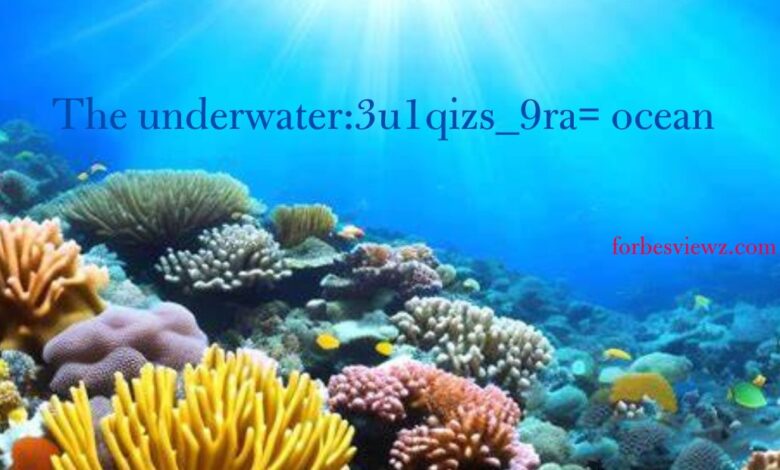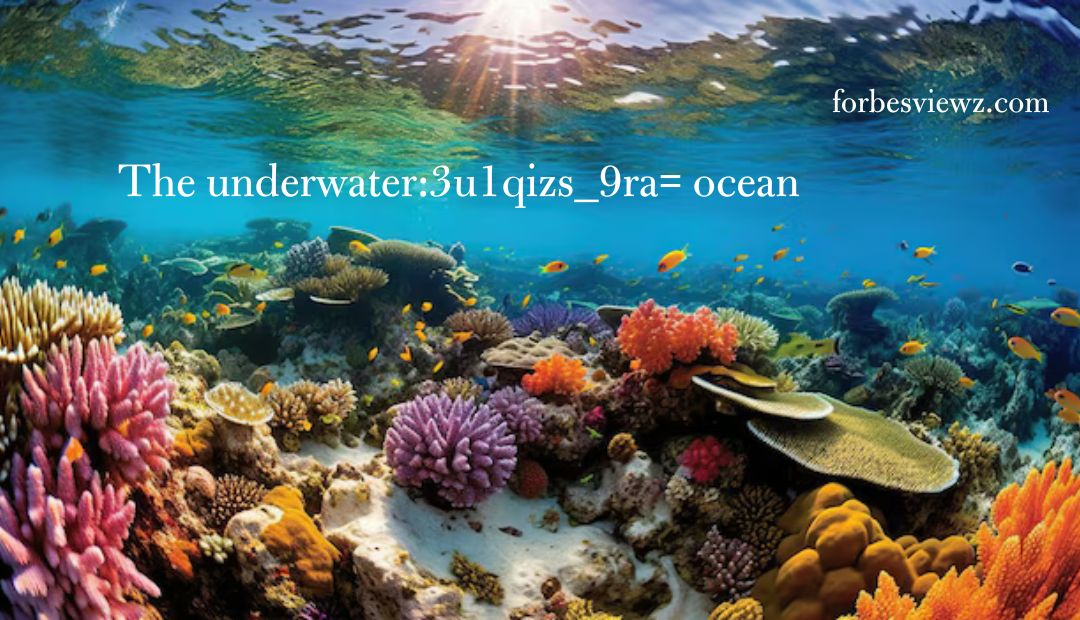The underwater:3u1qizs_9ra= ocean

The underwater:3u1qizs_9ra= ocean – The ocean’s underwater:3u1qizs_9ra= ecosystem provides both breathtaking natural beauty and essential survival benefits to humans. It absorbs carbon dioxide emissions while dispersing heat around the world to stabilize climate patterns.
From coral reefs to dark trenches, our vast marine realm is fill with incredible animals and geological marvels. In this blog post we’ll explore different zones of the ocean while also meeting some of its most fascinating inhabitants.
Coral Reefs underwater:3u1qizs_9ra= ocean
Coral reefs are one of the world’s most complex and diverse marine environments. They support billions in economic activity annually, protect coastlines from erosion and storm damage, provide fish breeding grounds for marine life species that depend on them for sustenance, as well as being home to over half of all marine species, many endangered ones included.
Stony corals are multicellular organisms that construct large limestone skeletons spanning several meters in thickness. These structures offer shelter to other creatures like shrimps, crabs and clams as well as single-celled algae called symbionts which supply energy needed to produce rock-building proteins in corals.
Deep-sea ecosystems
People often envision dolphin pods, schools of fish and sharks when they think about the ocean. But that is only part of it: this only covers the surface layer which extends 650 feet (200 m), while below this lies an darkness known as the mesopelagic zone – often mistakenly believed until mid 19th century not to exist at all.
These ecosystems include cold-water coral reefs, sponge beds and hydrothermal vents on underwater mountains – each an incredible complex system with late maturing, slow reproducing flora and fauna that are sensitive to human disturbance. Furthermore, their environment changes quickly due to climate change, making these habitats even more at risk of overfishing and exploitation through activities such as deep-sea mining; but we now have policies and institutions in place that help ensure harvesting practices remain responsible and within sustainable limits.

Estuaries underwater:3u1qizs_9ra= ocean
Estuaries are coastal bodies of water where freshwater from rivers mixes with saltwater from the ocean to form unique environments where both riverine and marine life flourish, serving as a transition zone between rivers and open sea. underwater:3u1qizs_9ra= ocean
An estuary is a body of water partially enclosed by land and the sand and silt of beach ridges and dunes, and surrounded by salt marshes and barrier islands. Unlike bays, its waters are subject to ocean tide influence, so over time its height and salinity can change substantially. underwater:3u1qizs_9ra= ocean
There are various kinds of estuaries. A coastal plain estuary forms when seawater fills an ancient river valley like Chesapeake Bay or Puget Sound. Fjord-type estuaries feature steep cliffs and narrow channels; lagoon-type estuaries are formed through tidal action and sediment accumulation.
Seagrass beds underwater:3u1qizs_9ra= ocean
Seagrass beds may not seem spectacular or glamorous like coral reefs and rainforests, but they play a critical role in maintaining ocean health. These underwater meadows of marine plants fully adapted to salty and brackish water serve as food and shelter sources for thousands of marine creatures and birds – including endangered dugongs and sea horses, snapper and groupers, herons and pelicans as well as many others including dugongs themselves, dugong sea horses snapper groupers herons pelicans herons pelicans etc – while helping prevent erosion by trapping silt and silt, filtering storing nutrients and pollutants – also contributing to carbon sequestration absorbing 35 times more carbon than forests on land.
Global human impacts are having a detrimental effect on seagrass meadows worldwide. Pollution, destructive fishing practices and direct physical disturbances such as boat propeller strikes all threaten these fragile ecosystems that provide essential support services. If we want them to thrive we must help.
Marine mammals underwater:3u1qizs_9ra= ocean
The oceans are home to a diversity of marine mammals, such as whales, dolphins, seals and sea otters. These marine animals play an essential role in maintaining ocean health and climate system stability by acting both predatory and predacious roles and helping balance ecosystems by controlling populations of other species; carbon sequestration as well as other essential global functions are provided through them.
Marine mammals tend to be very social. A pod of dolphins will follow any lost member back up the surface. Additionally, this close socialization is common during whale stranding events where groups remain together so as to not become dispersed during their search for safe landing spots. underwater:3u1qizs_9ra= ocean
The future of the ocean
The ocean is home to one of Earth’s greatest concentrations of biodiversity and an essential component of climate systems and economies worldwide. Unfortunately, today it faces various threats-from overfishing and pollution to global warming and deoxygenation-that threaten its sustainability. underwater:3u1qizs_9ra= ocean
Scientists have long recognized that major shifts in ocean conditions and ecosystems can result in mass extinctions, changes to climate and water temperatures, as well as degradation of marine resources. Such shifts may be driven by persistent environmental stresses like ocean acidification or temperature increases; climate change; upwelling hypoxic deep waters from hypoxic zones; episodic environmental disturbances such as volcanic eruptions; disruptions of orbital eccentricity eccentricity eccentricity eccentricity eccentricity precession (Milankovitch cycles); global biogeochemical changes caused by large carbon dioxide fluxes.
Diverse Zones underwater:3u1qizs_9ra= ocean
The ocean contains various zones that determine which organisms inhabit it, with some zones being distinguished by how much sunlight they receive and are known as euphotic, twilight, or aphotic zones. underwater:3u1qizs_9ra= ocean
Most organisms that are visible to humans reside in the euphotic zone. This area encompasses everything beneath the water’s surface, such as fish, jellyfish and sea turtles. underwater:3u1qizs_9ra= ocean
Underneath this layer lies the mesopelagic zone, which can range from 600 to 3,000 feet below the surface. Squid and octopuses often find shelter here as it doesn’t receive as much sunlight but still uses bioluminescence for hunting purposes.
Bioluminescent Creatures
As with fireflies, foxfire mushrooms and sea butterflies, many sea creatures emit light in order to communicate with mates, attract prey or escape predators in the dark. Scientists utilize bioluminescent creatures as bait when hunting large sea mammals using bioluminescence as bait. underwater:3u1qizs_9ra= ocean
Bioluminescence, produced by these creatures, is produced through cold chemical light (not heat), produced from enzymes called luciferases that react with food sources such as amino acids. Re-emitted as light is usually in different colors and patterns. Bioluminescence occurs across the ocean but particularly prevalent within 200 to 1000 meters depth in mesopelagic zones such as twilight zones where sunlight penetration is limited and most animal life thrives.
Mid-Ocean Ridges
The mid-ocean ridge system, the largest mountain range on Earth, encircles our planet like an expansive baseball mitt. Comprised of submarine volcanoes and mountains forming new ocean crust while mapping tectonic plate movements and housing unique habitats like hydrothermal vents; as well as having global water movement effects on marine life and climate.
Ridges are form by divergent boundaries between Earth’s tectonic plates, which cause magma to rise from deep within and emerge onto the seafloor in massive volcanic eruptions, known as sea-floor spreading. Most of this magma consists of basalt. It’s important to remember that how quickly magma rises can alter its shape; faster rates result in steeper topographies while slower ones lead to gentler slopes.
Marine Mammals
Marine mammals are warm-blood animals that breathe air through lungs and produce milk to nurture their young. These marine mammals live all or most of their lives in the ocean and have adapted to survive its harsh conditions by developing special features to assist their survival – such as sleek bodies that help them swim faster, or layers of fat (or blubber) for insulation against heat loss and providing insulation against heat loss. underwater:3u1qizs_9ra= ocean
They can also communicate effectively using sound waves that travel more effectively through water than air, such as dolphin echolocation clicks to coordinate hunting efforts; and humpback whale songs used to attract females and establish territory. Marine mammal sounds can often be hear by shore-dwelling species as well as birds, fish and other marine life including other mammals and birds.
Estuaries underwater:3u1qizs_9ra= ocean
The Estuaries around the globe are unique environments shape by freshwater flowing into and mixing with saltwater, creating dynamic ecosystems which support an extraordinary diversity of plant and animal life. It may result from submerged river valleys or coastal erosion caused by glacial movement; often with lagoons, barrier beaches, or rocky intertidal areas present.
Native Americans refer to these areas as the “between-land”, and for good reason: they exist between land and sea, featuring wetland communities such as marshes and mangrove forests, as well as mud flats, tidal streams, intertidal shorelines and reefs. RAE works to preserve and restore estuary habitats as well as the tidal waters surrounding them.
Conservation
Numerous organizations worldwide are dedicate to ocean conservation. Institutes and groups like Fish Welfare Initiative are particularly focused on marine wildlife preservation and environmental protection, while others such as theirs focus specifically on aquatic animal welfare issues that have become more relevant due to growing awareness for animal sentience. underwater:3u1qizs_9ra= ocean
One of the greatest environmental challenges today is underwater pollution: the introduction of harmful substances into our water bodies through chemicals, plastics, oil spills or sewage discharge. Pollutants like plastics, oils spills or sewage have an adverse impact on marine organisms and ecosystems; land-based activities like agricultural runoff, urban sewage discharge and industrial waste contribute further; while maritime activities include accidental oil spills or ship-generated waste discharging are further aggravating this issue.


